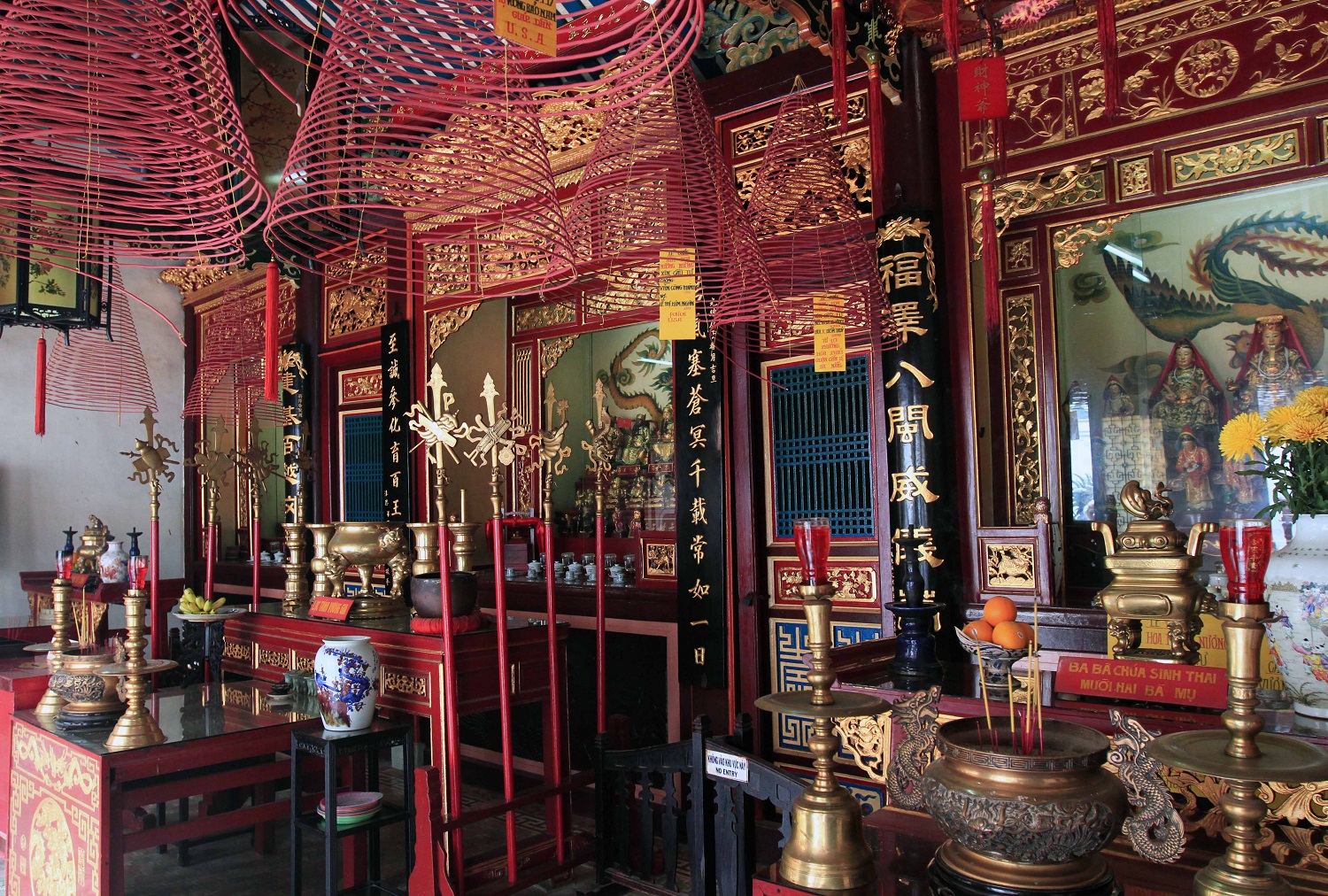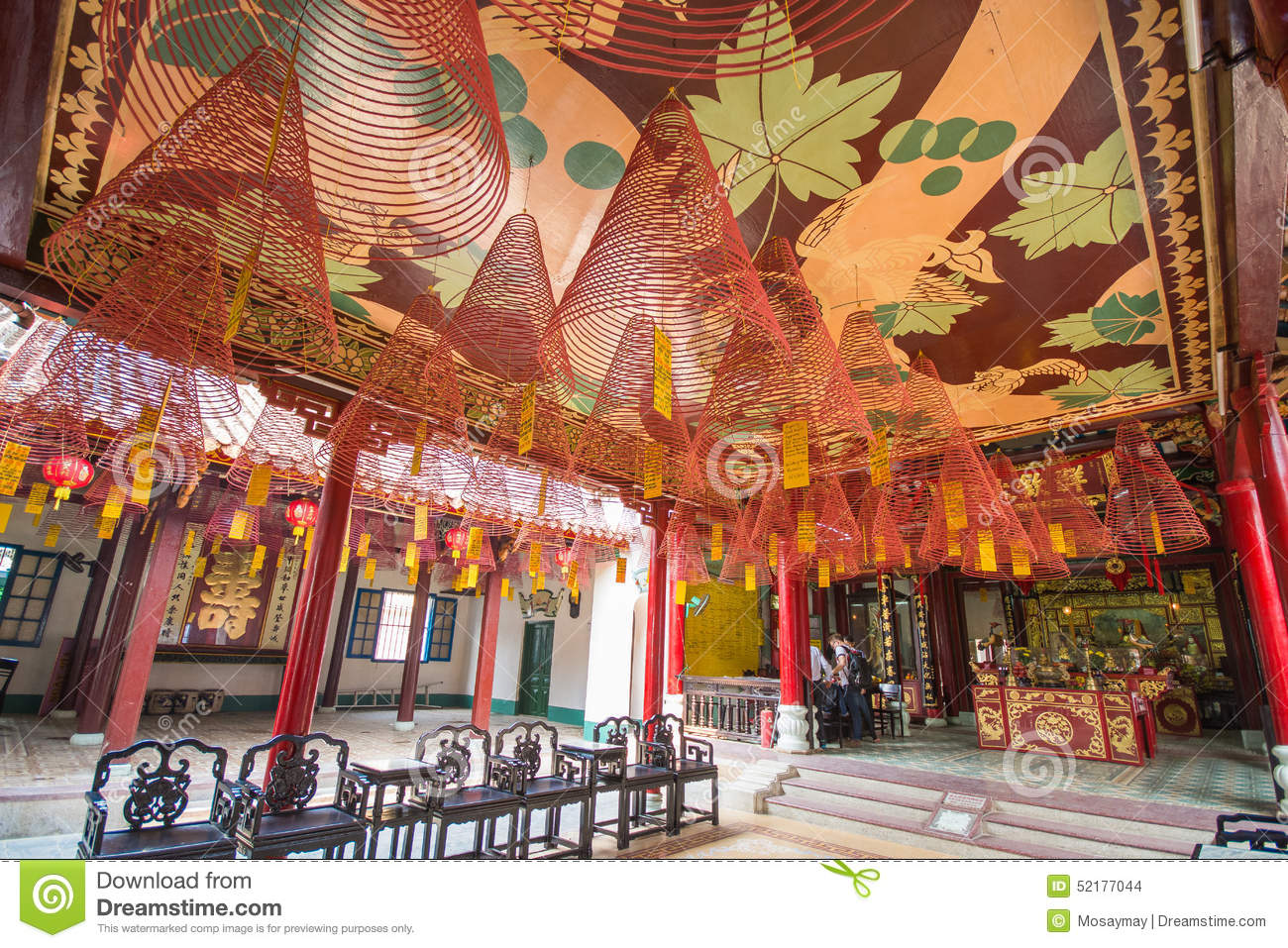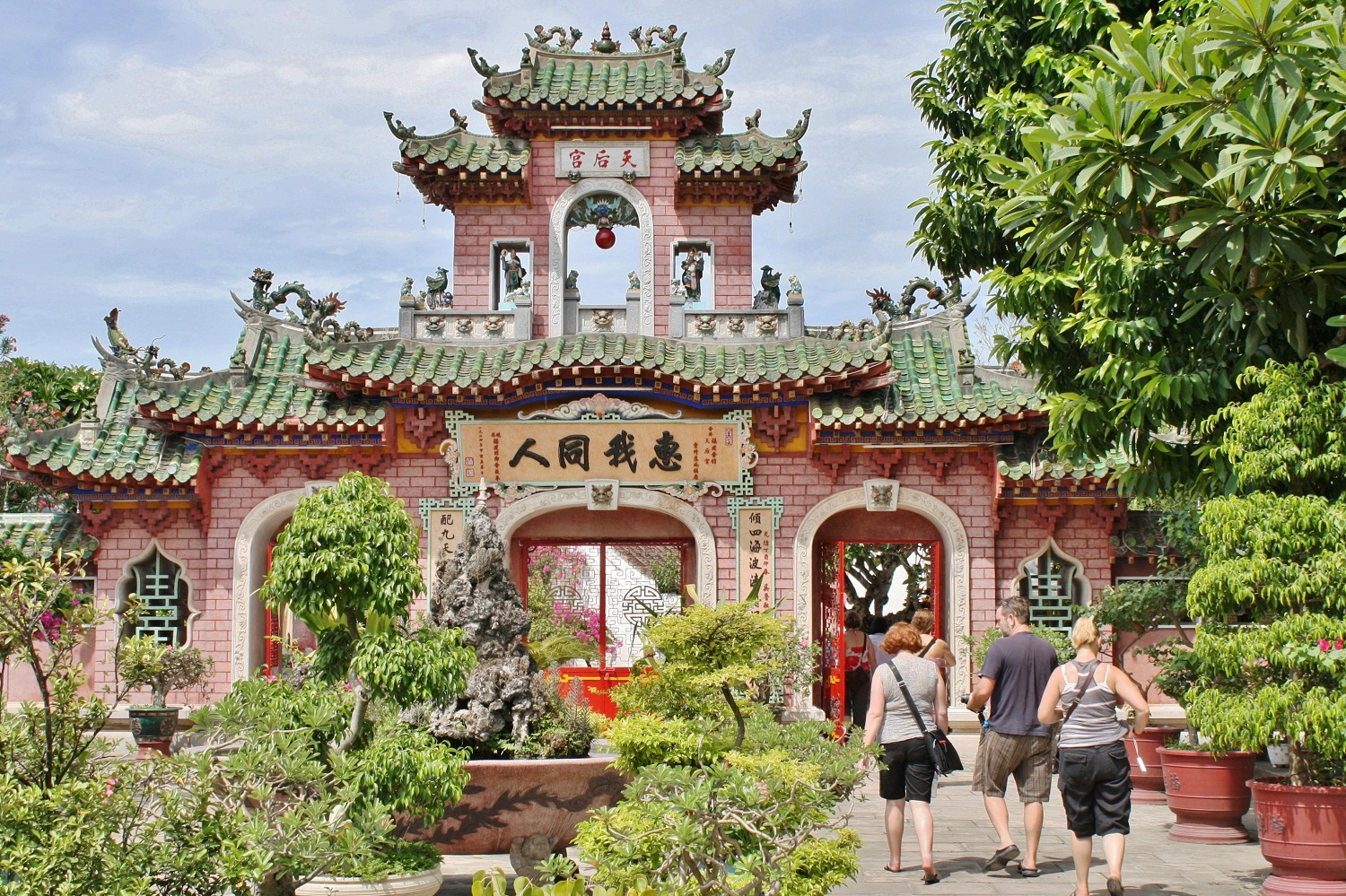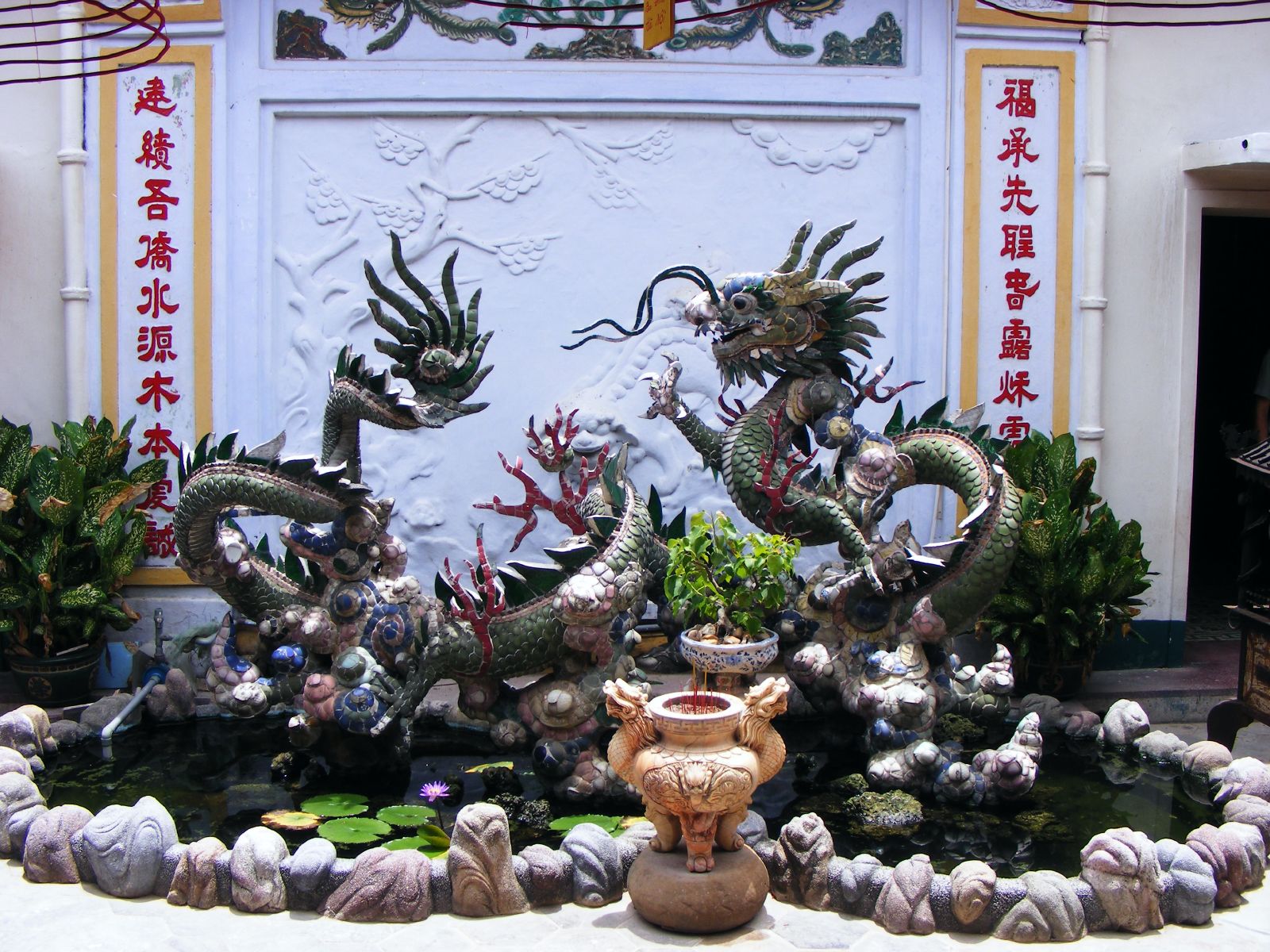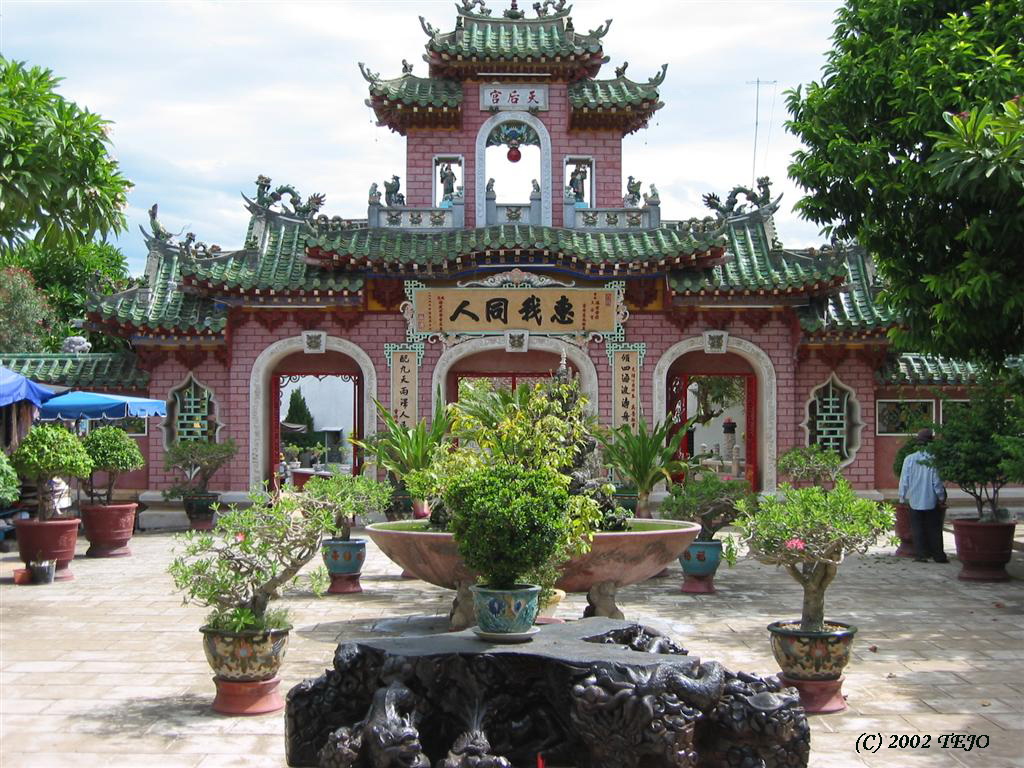Phuoc Kien Assembly Hall, located at 46 Tran Phu Street, was founded in 1690 and served the largest Chinese ethnic group in Hoi An (the Fujian). It contains the Jinshang golden mountain temple and is dedicated to Thien Hau, the goddess of the sea and protector of the sailors. The pagoda is also a place of gathering for the natives of Phuoc Kien. You must visit this assembly hall to discover an excellent work of architecture, also considered a heritage of historical significance.
Originally, the house was a thatched pagoda called Kim Son, which was built by Viet people living in Hoi An in 1692. The pagoda was dedicated to Buddha. Over the course of time it was damaged, and in 1759 the owners had to sell it to the rich Phuoc Kien traders from China who came to Hoi An, so that it could be restored. After the restoration, the pagoda was renamed “Phuoc Kien Assembly Hall”.
Due to restorations and support by the Fukien people, the Assembly hall became resplendent and spacious, taking part in the embellishment of Hoi An’s architecture. Arranging the statues for worshiping means “human happiness”, and it profoundly expresses the oriental philosophy. The Assembly Hall is in fact a temple that holds the sea goddess Thien Hau, the goddess Thuan Phong Nhi, who is able to listen to the sound of a ship even at a distance of thousand miles, and at last the goddess Thien Ly Nhan, who is able to see those distant ships.
There are lots of animal symbols in the design and architecture of the Fukian Assembly Hall (Phuc Kien). The mosaic fountain inside the assembly hall bears a fish sculpture that is a symbol of achievement. Besides the fish, there are other animals such as dragon, unicorn, phoenix, turtle and so on. All these animals signify different features of the Chinese culture. The dragon is the symbol of power and the turtle signifies endurance. On the other hand the unicorn is a symbol of knowledge and the phoenix represents nobility.
Phuoc Kien Assembly Hall is religious relic. It is the biggest assembly hall and displays rich architectural and artistic features. Annually, on the 15th of January lunar year, 16th of February lunar year and 23th of March lunar year many activities are organized, attracting a lot of foreign as well as domestic tourists. On 17th of February 1990 Fukien was listed a national historical vestige.
The Assembly Hall stretches from Tran Phu Street to Phan Chu Trinh Street. The three-entrance gate is a structure composed of Seven-roof layers covered with blue enamel tube-tiles. These roofs with gently curved corners overlap each other. A board with three Chinese characters “Kim Son Tu” is hung at the front hall. Inside the hall, there are two big embossments. The one on the left describes the scene of Thien Hau Holy Mother saving a boat which was sinking into the sea. The one on the right represents the scene of six generals riding horses and leading to fight the Qing in order to restore the Ming Dynasty movement. After these six generals were defeated, their offspring had to flee to Hoi An.
The main hall is dedicated to the statue of Avalokitesvara sitting in mediation in a glass cage. A big incense burner is placed at the front of the statue. On the left of the incense table is the statue of the God of Thien Ly Nhan (thousand-mile vision) and the right is the God of Thuong Phong Nhi (thousand-mile hearing). These are masterpieces of the skilled workers of Kim Bong village. These gods are believed to have assisted Thien Hau Holy Mother in saving victims on the sea.
The rear of the main hall is dedicated to the worship of Thien Hau Holy Mother. Her statue seats in mediation. On the left, there is a model of a 1875 sailing boat. Behind the main hall is the back sanctuary. At the front is a small lake for raising ornamental fish. A big dragon whose head is grafted with turquoise enamel porcelain and colorful glass pieces twists around the lake. The head looks very lively and beautiful. A unicorn embossed on the wall, at the back of the hall, is depicted playing with the dragon above the lake, to form the scene of “dancing dragon and unicorn”.
place at the centre of the back sanctuary is dedicated to six generals of the Ming Dynasty who came from Phuoc Kien Province. Two sides of the back sanctuary are dedicated to Chinese popular gods. The left altar is dedicated to three Sanh Thai goddesses (Kim Hoa Nuong Nuong, Sanh Thai Nhi Chua, Sanh Thai Thap Nhi Tien Nuong) and 12 midwives. The right one is dedicated to the God of Wealth. As for the back sanctuary, it is dedicated to people who donated their wealth to build the pagoda. The Assembly Hall houses a lot of statues, bronze drums, bronze bells, big incense burners, 14 horizontal lacquered boards and other valuable artifacts.
A place at the centre of the back sanctuary is dedicated to six generals of the Ming Dynasty who came from Phuoc Kien Province. Two sides of the back sanctuary are dedicated to Chinese popular gods. The left altar is dedicated to three Sanh Thai goddesses (Kim Hoa Nuong Nuong, Sanh Thai Nhi Chua, Sanh Thai Thap Nhi Tien Nuong) and 12 midwives. The right one is dedicated to the God of Wealth. As for the back sanctuary, it is dedicated to people who donated their wealth to build the pagoda. The Assembly Hall houses a lot of statues, bronze drums, bronze bells, big incense burners, 14 horizontal lacquered boards and other valuable




